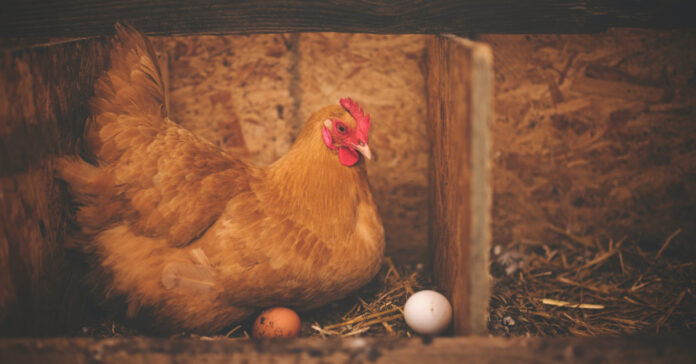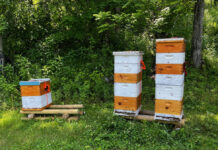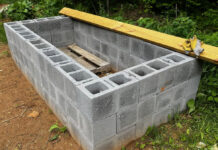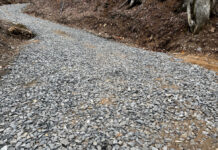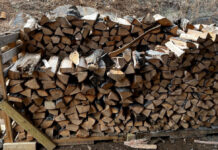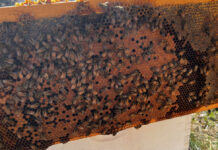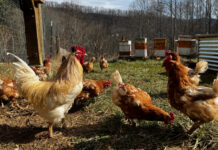Have you seen or heard one of the many people that claim their chickens have stopped laying this winter and are blaming it on the layer feed they buy from Tractor Supply? I have not experienced this, but I stopped buying my feed at Tractor Supply more than a year ago due to costs.
Let me give Tractor Supply the benefit of the doubt and say I don’t think there is any hard evidence of these allegations, just anecdotal evidence from people comparing notes. The theory (rumor?) is they changed the formula of their feed and people’s chickens have been laying less ever since. Conspiracy theorists think it is to drive up the cost of eggs.
Keep in mind, it’s normal for chickens to lay less in the winter and stop laying during their molt, especially once the hens get older. (I wrote about this four weeks ago). However, it’s abnormal for them to stop laying for months unless they are several years old. If you bought your chickens in 2020 because of COVID, they might be getting beyond their active laying years.
I don’t think we had a day without at least one egg this winter, and while production was only 2 or maybe 3 eggs per day around the winter solstice, as the days have gotten longer, production increased. We are now getting 3 to 5 eggs per day and one day last week they surprised us with 6. I expect we will be up to 8 to 10 eggs by March and be back to a 11 or 12 a day this summer.
Diversify your Chicken’s Feed
I don’t feed just one kind of food. I mix “cheap” layer pellets I buy for $17 a 50-pound bag with the “expensive” pellets I buy for $22.50 a bag. Both provide 16 percent protein, which is recommended for layers. I mix my feed to save a bit of money, but more importantly, the chickens are used to both feeds. If one of our suppliers runs out due to supply chain problems (which has happened), I can just feed the other. I currently have a four-month supply of feed on hand.
I also toss the chickens some scratch every morning, and I add extra black oil sunflower seeds to the scratch. In the winter, I add more because the oils are fatty and help the chickens generate energy and keep warm. On top of this, we feed them table scraps and leftovers.
Chickens are voracious eaters and will gobble up all sorts of leftovers. We have a list posted in the kitchen of what they should not eat (most are deadly nightshades), but otherwise, most of our cooking byproducts got to the birds. This includes peelings and scrapings from carrots, potatoes, cucumbers, etc. If we cut a bad spot out of a piece of fruit or vegetable, or if something gets too mushy or spoiled, it goes in the chicken bucket. If a leftover is abandoned in the back of the refrigerator too long, they also get it.
Finally, we feed our chickens scrambled eggs. Most weeks, we get an egg or two that is cracked or looks funky enough that we are not comfortable eating it ourselves. We scramble these up and feed them back to the chickens. They love it! Just don’t give your birds raw egg. You don’t want them realizing those eggs in the nest box are edible.
Extra Protein During the Molt
When my hens molted, I fed them a high protein (20 percent) feed meant for raising meat birds. It was the same brand as the “expensive” feed, so I just swapped them out and continued to feed 50/50 with the less expensive feed. I believe the additional protein helps them put on new feathers faster and with less stress. Note that I don’t have any scientific proof of this, but some of our birds that were damn near naked quilled up rapidly. Today, all the girls have a nice, fresh coat.
If you think your chickens are not laying because of a lack of protein or the lack of some mineral in your feed, then buy a higher protein feed and mix it in, or switch to a new brand.
Also consider letting your chickens free range. Mine don’t get to free range as much in the winter because I don’t let them out of the run in cold or damp situations. But when I open that gate, they eagerly run out. I don’t think there are any bugs out there to be had, but they are scratching and pecking at something.
In short, diversify your chicken feed. Not only will this help you during a supply chain problem, you won’t have all your eggs in one basket (pun intended) if something goes wrong with one feed formulation.
Shop Local
Admittedly, when I first moved to the homestead, I got many things at Tractor Supply, including my fence posts and rolls of fencing. I’ve bought waters and feeders there as well as flashlights and gloves. I also like their tools section and they have a good selection of chain that you can have cut to length. But as I grew to be a more experienced homesteader, and as I visited some of the local farm stores and general stores, I started shopping with them instead.
When I support a local merchant, I am putting money back into my county. I know my dollars go to a local family, not to a CEO and shareholders far away. In most cases, I am dealing with the owners and/or their children, and they recognize me and often greet me by name. At the big box stores, you rarely see the same sales person twice. The customer service is also outstanding at my local stores.
At the feed mill where I buy our scratch and the “cheap” feed, we just pull up to the window, tell them what we need and they load up the back while we settle the bill. The wait time is shorter than a fast food drive-in window.
While not every item is less expensive locally, a surprising number of things are. That turned out to be a welcome surprise. I also save by not having to drive as far.
Avoid Big Box Stores
If you’re worried about the quality of chicken feed you are using, whether from Tractor Supply or elsewhere, my advice is to find a local feed mill or farmer’s co-op if you buy large quantities. If you just need a bag a month, look for a local farm store or general store. This might be hard to do if you have four chickens behind your suburban house, but if you have moved out beyond the sidewalks, it can pay off.
While poultry experts might want you to feed the same thing every day, I’m not a factory farm. My birds drink out of mud puddles, eat bugs and grubs, and devour weeds and other greenery. I feed them a variety and figure their instincts and Mother Nature will tell them what to eat. Let’s remember that before we produced all this commercial food, their diet varied with the season. My feeling is, the birds will adapt. So far, that has been the case.

